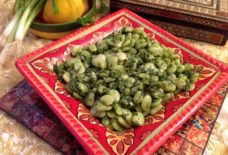SOURCE: VOGUE
BY: BROOKE BOBB
People are inundated with myriad ways to read fashion content online. Outside of what we’re overstimulated by on our social media feeds every day, there are countless blogs dedicated to niche personalities and personal style, and hundreds of websites that tell us what to wear and what not to wear, who’s copying who on the runways, and which designers are the next big thing. Despite the fact that there seems to be a surplus of ways to digitally digest trends and model info and industry gossip, Tunisian journalist and onetime editor of Style.com/Arabia Sofia Guellaty always felt shortchanged. Frustrated by the fact that the Arab world was underrepresented within the online fashion space, she launched Mille World.
The website officially opened for business in January 2018 as a platform offering fashion, beauty, and lifestyle commentary based on Arab youth culture. Through original reporting, videos, and photo shoots, Guellaty and her team feature subjects ranging from underground movements and skater crews in Dubai to up-and-coming designers who have trained abroad and started businesses in places like Beirut and Amman. Mille editors also pay much attention to what it means to be self-expressive in nations with social and religious constructs that can make doing so seem nearly impossible. Currently on Mille, there is one article titled “The Egyptian Photographer Discovered by Jonathan Anderson” and another called “5 Body-Positive Lingerie Brands You Must Know.” Others include “The Rise of the Token Hijabi?” and “A Look Inside Saudi’s First Female Focused Street Style Book.” Guellaty and her staff, which includes advisers like model Elisa Sednaoui Dellal and European president of Next Models Saif Mahdhi, are aiming to capture the attention of the next generation of Arabs, and just as important, to present them to the rest of the world in a new light.
As Guellaty explains, “We really wanted to create the best content we could ever create for an Arab audience but also from Arabs.” She adds, “Who better than me or my female colleagues to explain to you what being a woman in fashion, an Arab woman in fashion, means today? It’s a somewhat controversial identity for someone looking in, but being Arab has never truly been explored on a large scale within the digital space.”
Guellaty acknowledges that for the vast majority of Europeans and Americans looking to westernized cities like Dubai and Abu Dhabi, the perception of Arab style can often be limited to giant, shiny super-malls and luxury label megastores like Hermès, Chanel, and Louis Vuitton. This is in part because, in those places in particular, there has never been a strong push to create a separate sartorial identity from Europe and the U.S. Drive through Dubai and you won’t see many individual boutiques with a focus on local designers. This outlook doesn’t just apply to retail either. “We have a Miss Lily’s in Dubai,” Guellaty notes, referring to the trendy New York hot spot that serves Caribbean food and juice. “Why would we ever have a Miss Lily’s in Dubai when you could have a Miss Fatimah’s, and it could be so funky and cool?” She adds, “We could do well to not emulate something else.”
Identity is the crux of Mille World. Everyone who works for Guellaty resides in the Middle East or northern Africa and is Arab born and raised. No one in the Mille office is afraid to talk about the female body, nor are they reluctant to promote politically outspoken streetwear labels like the Lebanese brand Prince Politique and Kuwait’s first streetwear brand RS.
Guellaty is particularly excited about a sister-owned, Amman-based label called Nafsika Skourti. “Their last collection was titled the Lowest Place on Earth,” she says. “This is how the Dead Sea is promoted to tourists, and it has a negative connotation, so they wanted to reclaim that narrative.”
Guellaty makes a point of showcasing the region’s independents. “What I find interesting is that when I ask for integrated content, both global and local labels are asking me to work with these little groups of rappers or skaters in Dubai. That’s who they want representing their brands.” She adds, “Generally speaking, what I see, in terms of fashion, is that we are breaking away from the clichés more and more. I think we are still very brand loyal, there are a lot of fans here of Balenciaga and Vetements and Off-White, for example, but on the other hand, we’re very proud of our local designers. Arab pride is very big right now.”








